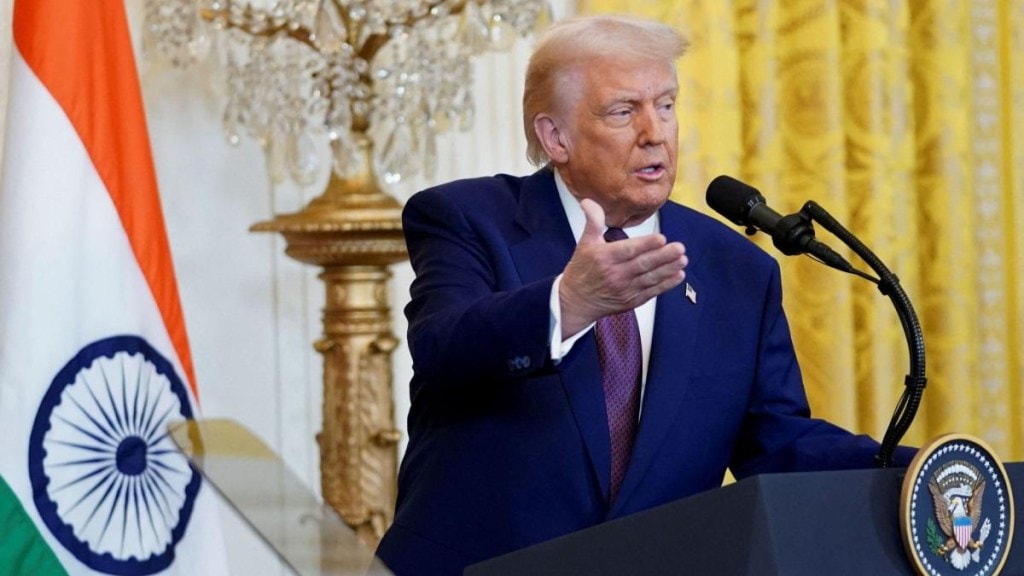With the US President Donald Trump announcing ‘reciprocal tariffs’ on imports, Goldman Sachs said that the potential impact of the same on India’s Gross Domestic Product (GDP) will vary between 0.1 to 0.6 percentage points. India’s gross exports to the US is one of the lowest among its EM peers at around 2.0 per cent of GDP.
In an analysis report, Goldman Sachs said, “We estimate a potential domestic GDP growth impact of 0.1-0.3pp under different scenarios of increase in average US effective tariff rate on Indian exports (under country-level reciprocity and product-level reciprocity), and different estimates of price elasticity of US demand for Indian exports.”
However, in case of global tariffs on all countries from the US, the brokerage firm added, India’s domestic activity exposure to US final demand would be roughly twice as high (~4.0 per cent of GDP) given exposure to the US via exports to other countries, and would likely result in a potential domestic GDP growth impact of 0.1-0.6pp.
What are the three different scenarios of increase in tariff?
According to Goldman Sachs, there are three ways in which the ‘reciprocal tariff’ plan may be implemented:
Country-level reciprocity: The Trump administration might choose to increase the tariff on all US imports by the average tariff differential between a particular country and the US. Under this scenario, the average US effective tariff rates on Indian imports would increase by ~6.5pp, it said.
Product-level reciprocity: In this scenario, the Trump administration would match the tariff rates on each product levied by its trading partner. Based on estimates by Goldman Sachs, this might increase the average US effective tariff rates on Indian imports by ~11.5pp. This would be a far more complicated way, with a longer implementation timeline.
Reciprocity including non-tariff barriers: Non-tariff barriers refer to administrative barriers, import licenses, export subsidies, etc. This, per the analysis report, is the most complicated version of reciprocal tariffs to administer given the complexity in estimating the cost of non-tariff barriers for each trading partner.
India’s bilateral goods trade surplus with the US has doubled in level terms over the last 10 years to $35 billion, which is equivalent to around 1.0 per cent of India’s GDP, in FY24. This is largely driven by electronics, pharmaceutical products, and textiles. India’s tariff rates are higher than the US on most products (6.5pp on a trade-weighted average basis), with the differential being the highest in agricultural products, textiles, and pharmaceutical products.
